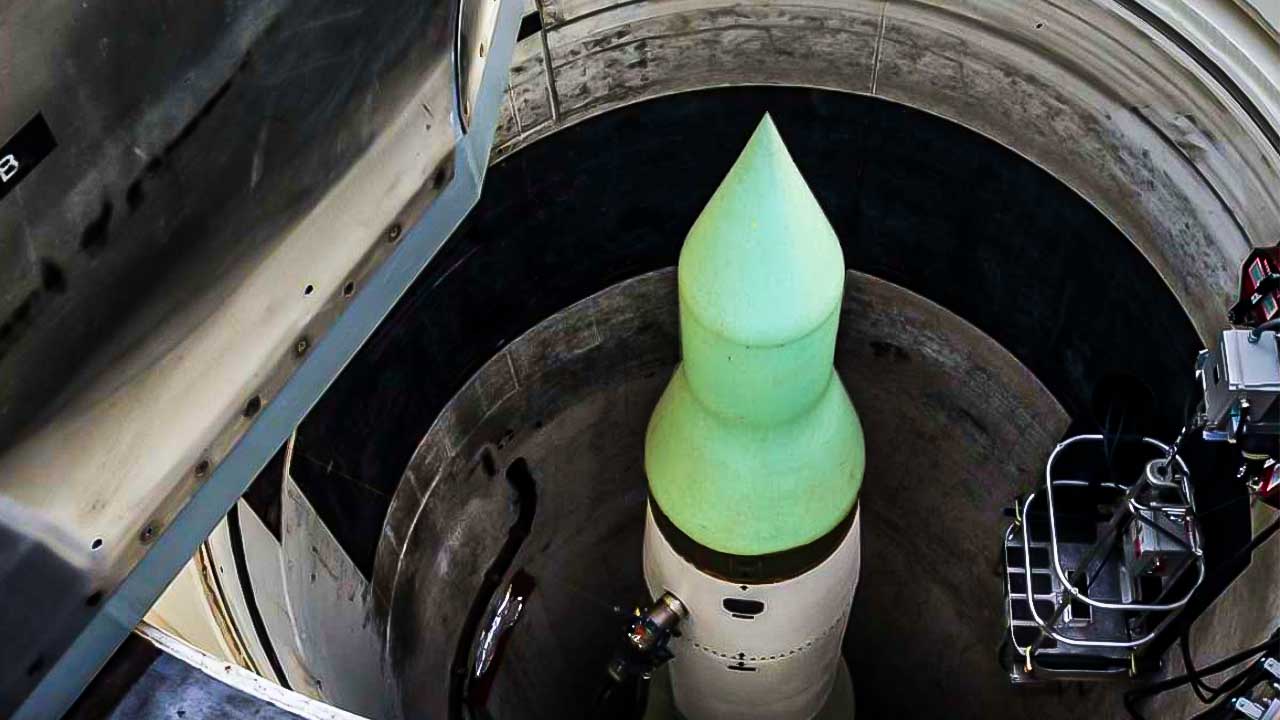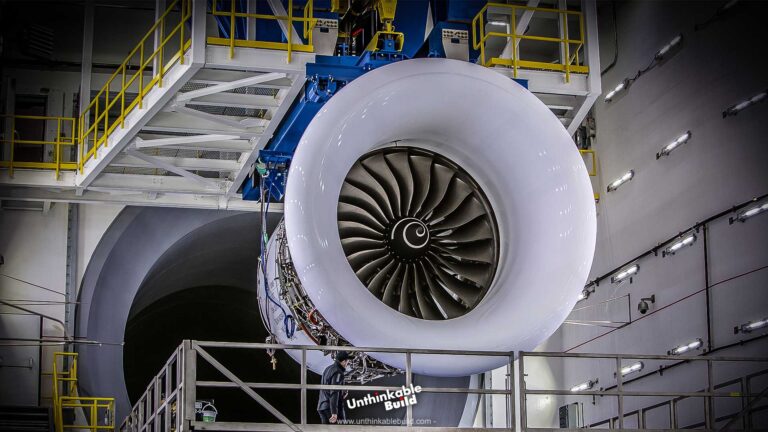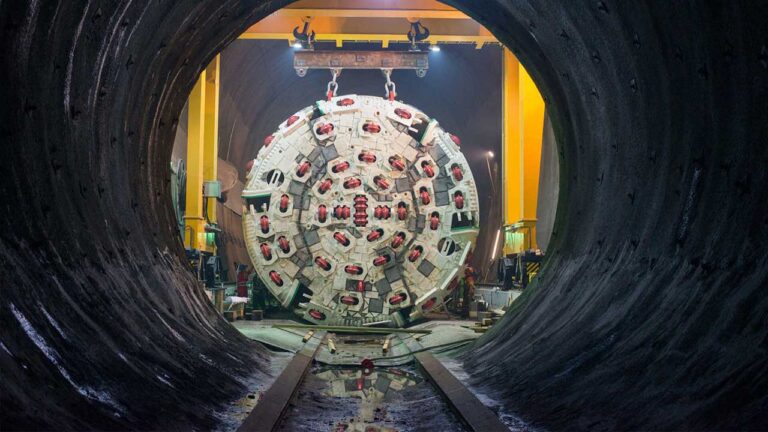The Sentinel: U.S. $100 Billion ICBM Project
The global adoption of modern technology in weaponry is now widespread. Following this trend, the United States has embarked on innovating its nuclear missile capabilities. The LGM-30 Minuteman Intercontinental Ballistic Missile or ICBM stands as a cornerstone of US defense strategy. However, US defense authorities have allocated over $100 billion to replace these missiles with modern counterparts, dubbed Sentinel. These advanced, high-speed missiles are poised to enhance the nation’s military prowess.
The production of the LGM-30 Minuteman ICBM commenced in the mid-1950s, with the delivery of progressively advanced models continuing until the 1970s. During this period, the capability to launch multiple targets simultaneously was achieved. The Minuteman III, renowned for its multiple independently targetable reentry capability, was integrated into the US defense strategy. By the 1970s, the US military had received a total of 1,000 Minuteman missiles.
As of September 2017, this arsenal has dwindled to 400 Minuteman III missiles, stationed in missile silos across Malmstrom Air Force Base in Montana, Minot Air Force Base in North Dakota, and Francis E. Warren Air Force Base in Wyoming. These ICBMs are slated for phased replacement by the next-generation LGM-35 Sentinel, scheduled to be manufactured by Northrop Grumman, with production set to commence in 2030.
Intercontinental Ballistic Missiles constitute the land component of the United States’ nuclear defense strategy, known as the nuclear triad, complementing submarine-launched ballistic missiles and nuclear weapons carried aboard long-range strategic bombers
The Minuteman III stands out for its impressive capabilities, featuring a three-stage solid-fuel rocket that forms the core of its formidable arsenal. Spanning approximately 14,000 kilometers in operational range, it covers vast distances with ease. Moreover, during the terminal phase, it can achieve speeds of up to Mach 23, equivalent to 28,400 kilometers per hour, highlighting its exceptional velocity and power.
Also Read: California’s Toxic Salton Sea is a Treasure Trove of Lithium
Launching from silos, the missile is intricately connected to an underground launch control center through a network of fortified cables, ensuring precise control and coordination throughout the launch process.
According to Tom Karako, Director of The Missile Defense Project, submarines excel in stealth capability, while bombers offer unparalleled flexibility, enabling them to choose various routes and the option to refrain from firing if needed. The advantage of ICBMs lies not solely in their geographic placement but in their dispersed distribution.
Spread across silos spanning five states and approximately 40,000 square miles, they enhance the resilience of the nation’s nuclear deterrent. With 450 silos strategically dispersed across multiple western states in the country, it poses a substantial targeting challenge for opponents, as to eliminate all 450 silos they would need to allocate roughly 800 or 900 weapons, rounding the numbers.
To adapt to evolving threats and operational requirements, the Minuteman III has undergone continuous improvements. Notably, its recent test launch from Vandenberg Space Force Base in California on February 9, 2023, underscores the ongoing commitment to enhancing its readiness and technological sophistication, ensuring its continued effectiveness in safeguarding national security.
While many Minuteman missiles have undergone continuous upgrades, some of them are now over 50 years old and experiencing diminishing reliability. In response, the Sentinel ICBMs slated to replace them will function similarly to the Minuteman missiles. However, the key difference lies in the construction material of their outer bodies. Instead of the heavier steel used in the Minuteman missiles, the new Sentinel ICBMs will feature outer bodies crafted from carbon composites. This change not only promises enhanced durability but also offers the potential for accommodating more nuclear warheads.
The LGM-35 Sentinel, also known as the Ground Based Strategic Deterrent or GBSD, represents an upcoming American land-based intercontinental ballistic missile system currently in its early developmental stages. Designed to replace the Minuteman III missiles, it is scheduled for operational deployment between 2030 and 2075.
Led by Northrop Grumman, with collaboration from subcontractors such as Lockheed Martin, General Dynamics, Bechtel, Honeywell, Aerojet Rocketdyne, Parsons, Textron, and others, the project aims to modernize the U.S. nuclear arsenal.
Equipped with the W87 mod 0 thermonuclear warhead, yielding 300 kilotons of TNT, and the W87 mod 1 thermonuclear warhead, the LGM-35 Sentinel boasts formidable firepower. It will utilize an astro-inertial guidance system supplemented by GPS technology and will be deployed from dedicated missile silos.
The Sentinel embodies the strategic modernization effort within the land-based component of the U.S. nuclear triad, ensuring a sustained and potent deterrent capability for decades to come.
Rather than the traditional method of opening the silo door and manually accessing the missile from the side, the new facilities will offer a significantly improved and more efficient approach to system updates. However, these enhancements come at a considerable cost, both for the updated missiles and the facilities themselves. Moreover, the process of updating the silos has proven to be more intricate than initially expected. Initially projected to cost $96 billion, the Sentinel program’s expenses have escalated, with the US Air Force now estimating a total expenditure of $130 billion.
Also Read: Johor Bahru-Singapore RTS: Fixing Asia’s Biggest Traffic Jam
The LGM-35 Sentinel stands at the forefront of the new generation of Intercontinental Ballistic Missiles currently in development to uphold strategic deterrence. When compared to other prominent ICBMs worldwide, several notable distinctions become apparent: The Russian R-36M, also known as SS-18 “Satan” boasts the longest range among all ICBMs, spanning 16,000 kilometers. Powered by a two-stage liquid rocket engine, it represents a formidable asset.
In contrast, China’s Dongfeng-41 features a range of approximately 11,000 kilometers and is distinguished by its road-mobile design, utilizing a three-stage solid-fuel rocket.
The Russian R-29RMU “Light Boat,” a submarine-launched ICBM, showcases a maximum range of 11,547 kilometers and has the capacity to carry multiple nuclear warheads. Similarly, the UGM-133 “Trident” II, deployed by the U.S. Navy, possesses a range of about 11,300 kilometers and can also carry multiple nuclear warheads.
Conversely, the Minuteman III currently serves as the U.S.’s land-based ICBM, offering a range of 13,000 kilometers. Nevertheless, it is the Sentinel’s imminent successor, poised to build upon the capabilities of its predecessor.
The Sentinel project aims to surpass the Minuteman III through the integration of advanced technologies, ensuring that the United States maintains a modern and dependable land-based component within its nuclear triad. With a focus on heightened security, survivability, and effectiveness, the Sentinel emphasizes adaptability to future threats and technological advancements.
Despite its advanced technology, utility, and other features, the LGM-35 Sentinel has encountered numerous challenges during its development phase.
Significantly, the program has faced substantial cost overruns, exceeding initial projections by at least 37%. Initially estimated at $118 million per missile in 2020, the acquisition unit cost has now surged to approximately $162 million.
Furthermore, staffing shortages, supply chain disruptions, and software difficulties have been highlighted by the Government Accountability Office. These issues are anticipated to extend the rollout of the program beyond the initially planned 2029 timeframe to a revised estimate between April and June 2030.
Software challenges have emerged as a notable obstacle, further contributing to project delays. According to an analyst, the technology employed in the Sentinel could potentially be more susceptible to hacking compared to Minuteman missiles. Contrasting with an ICBM initially deployed in 1971, which until recently utilized some form of large floppy disk technology, the Sentinel was envisioned as a fully modernized 21st-century missile. Unlike hacking a Minuteman missile, which would require physically accessing and manually splicing the copper communication wire to initiate launch, the Sentinels, with their significantly greater reliance on software, pose a different set of challenges.
The complexity of the Sentinel program has been emphasized by the Secretary of the Air Force, who characterized it as “struggling” with “unknown unknowns.” Acknowledged as one of the most extensive and complex endeavors ever undertaken, the program faces significant hurdles.
Nevertheless, despite these formidable challenges, the LGM-35 Sentinel remains a crucial component of the future US nuclear deterrent strategy. Ongoing efforts are in progress to address these issues and propel the program forward. Notably, robust support from lawmakers suggests that termination of the program is improbable despite the setbacks.







